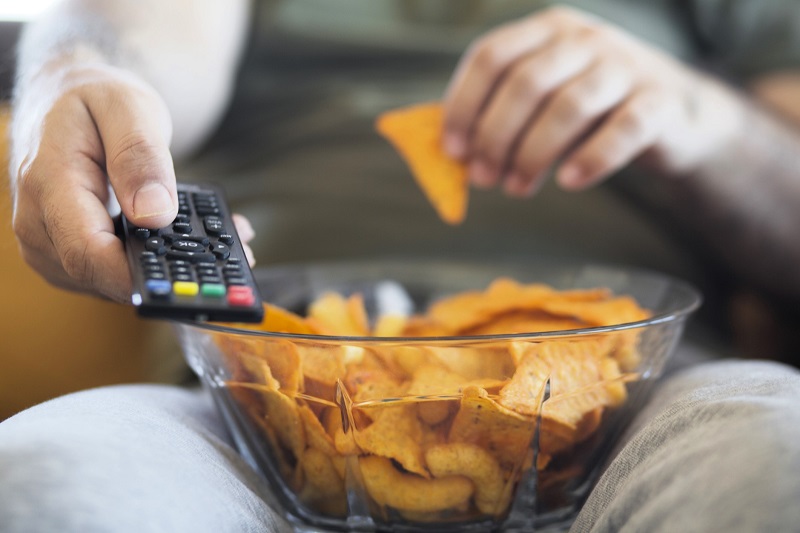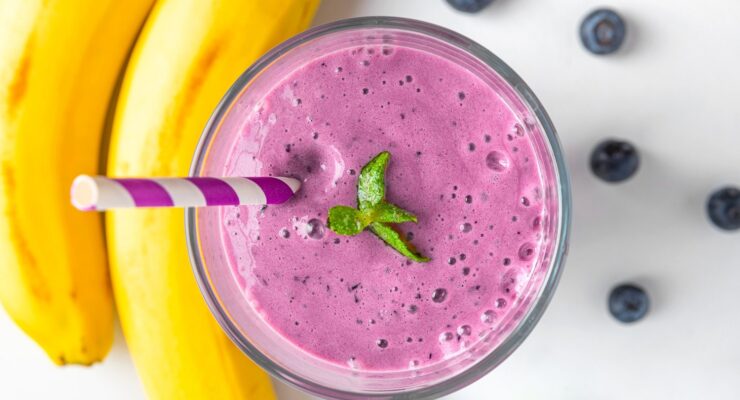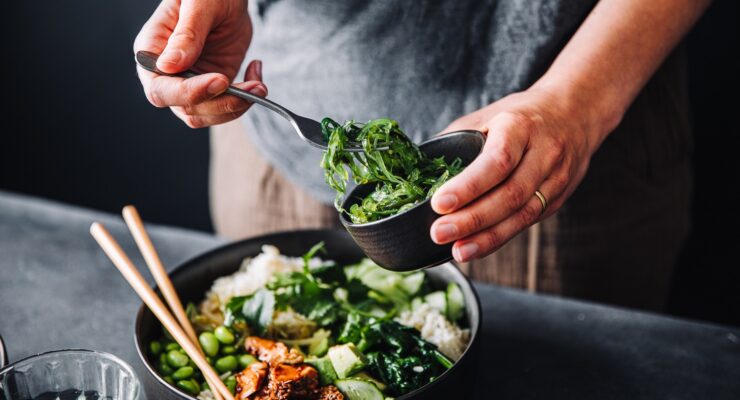7 Science-Backed Tips to Crush Sugar Cravings
Article posted in: Diet & Nutrition
Experiencing cravings for sugar is not a sign of weakness, but rather a natural human instinct. Our biology has a preference for sweet flavors. Embracing this innate inclination is a part of being human.
It’s true! As described in a 2018 research review, eating sugar or other sweet foods triggers the release of dopamine, a feel-good chemical that our brains use a reward for good behavior. For humans thousands of years ago, high-calorie, high energy foods—like sugary ones—were scarce. So brains rewarded eaters for downing sweet treats like fruits, honey and other sweet fare. Just like you’d train a dog to keep performing a behavior by giving them a treat, our brains trained us to keep eating high-sugar foods by giving us a treat: dopamine.
But unlike our ancestors, sugar isn’t hard to find in the 21st century. In fact, it’s harder not to find: Added sugars can be found not just in cookies and cakes, but in unexpected places like condiments and salad dressings.
All that added sugar doesn’t just add extra calories to our diets. It’s also dangerous: In a study, people who consumed 17 to 21 percent of their daily calories from added sugars were 38 percent more likely to die of heart disease.
When our brains are wired to want sugar, we need serious strategies to crush those cravings. Learn how to stop sugar cravings with these seven tips; they are backed by science and can help reduce your sweet tooth, so you can continue cruising to your weight loss goals.
1. Start Your Day with Protein

Nutrisystem breakfast options are carefully crafted with protein. Protein is digested slowly, reducing hunger and cravings, and ultimately helping you stick to your calorie goals until your next snack or lunch.
But protein in the a.m. can also help curb your body’s search for sugar: In a study, participants who ate a breakfast with 40 percent of calories from protein had fewer cravings for sweet foods later in the day than another group who had a breakfast that was just 15 percent protein.
Want to pump up your morning protein? Try pairing one of these PowerFuels with your breakfast for a filling, craving-fighting boost.
2. Finish Your Day with a Good Night’s Sleep

Sleep is one of the best tools in any dieter’s weight loss arsenal. When you don’t get enough sleep, your hunger spikes, you exercise less and you’re more likely to choose fattening foods. Your risk for obesity and diabetes also increases.
Poor sleep also makes you crave more sugar: In a 2020 study of 495 women, researchers found that those who reported poor sleep ate more added sugars than those who slept well.
Improving your sleep doesn’t have to be complicated, though. Try these five simple strategies to get better shuteye and you may crave less sugar.
3. Don’t Eat Sugar in Front of the TV or On Your Phone

Try to separate snacking from streaming and scrolling as much as you can. Doing so could mean you’re more satisfied while eating less sugar.
In a 2020 study, scientists had groups of people drink chocolate milk of varying sweetness while they performed tasks that were distracting—kind of like watching a show or checking your social media feed. When the tasks were more distracting, the brain connection telling participants about the sugar they were consuming was reduced. Basically, they didn’t get the same level of brain reward or satisfaction from having sweeter stuff … so they had more of it.
Paying attention to what you eat or drink—noticing the flavors, textures, smells and sweetness—can help you feel more satisfied and consume less. It’s a strategy called mindful eating. One simple way to practice it is to put down your phone and switch off the TV while you have a sugary snack. Focus on what you enjoy about it, savor the sweetness, and your craving can be quelled without going overboard.
4. Put Sugar Out of Sight, Out of Mind

When sugar is out in the open or close at hand, you’re more likely to eat it. In a study of office candy dishes, just moving the dish further away on a desk reduced the number of sweets that office workers ate each day by 1.8 candies. Putting the bowl out of sight—in a place where they still knew it was there—resulted in 2.2 fewer candies eaten per day.
If you’ve got sugary stuff in an easy-to-see spot, such as sugary cereals out on the counter or a package of cookies in a cabinet you’re always opening, move them! Just keeping those sweets out of sight could make you less likely to overindulge in them.
5. When You Crave It, Try to Wait a Few Minutes

One time-tested weight loss strategy is to wait: In some cases, dieters are encouraged to sit for 10 minutes before going for seconds at a meal. This lets the food they’ve already eaten start to satisfy them—and often, after 10 minutes, they aren’t hungry anymore after all.
This can work with sugar, too, and you don’t have to wait so long. In a 2019 study, vending machines were equipped with a 25-second time delay. During that time, participants had the option to get a “regular” or “healthy” snack—and that short wait increased the number of people who chose the healthier options.
Try it for yourself. The next time you reach for a piece of candy from a colleague’s bowl or another bite of sugar, try to wait just one or two minutes before eating it. Then you’ll see if you really want it after all.
6. Or Look for Another Way to Boost Dopamine

Sugar isn’t the only way to give your brain a dose of feel-good dopamine. For starters, you can get moving. Exercise can also give you a dopamine and mood boost. In a study, people who started practicing yoga each day improved their dopamine levels. And other studies have found that a single workout—acute exercise—can pump more feel-good chemicals into your brain.
How much is enough and how tough does it have to be? Not long, and not too tough. Some studies have found that just 20 minutes of walking can boost mood and protect your brain from memory loss.
Another way to get some dopamine is to listen to your favorite song. Multiple studies have found that one of the reasons we enjoy music is that it releases this feel-good chemical. Instead of unwrapping a candy bar, try combining your favorite playlist with a lunchtime walk and get the dopamine fix you’re looking for.
7. If You Can, Quit for a Few Weeks

This one is really tough, but small studies show that taking a break from added sugars for a few weeks can really help. In a study of 19 people who cut out sugar for two weeks, 17 of the participants stopped craving sugar after six days. When the study was over and they could eat sugar again, 18 of the 19 found that the sweet foods and drinks they consumed before the study tasted much sweeter than they previously believed—or just too sweet.
How can you survive two weeks without tearing your hair out? Since so many foods we buy have sneaky bits of added sugar, focus on whole foods. Eat salads dressed with salt and vinegar, lean meats and fish, and non-starchy vegetables you prepare yourself without adding sugar.
To satisfy your sweet cravings during this time, choose whole foods that have natural sugar like whole fruits and vegetables. Unlike added sugar, which causes violent spikes in blood sugar, energy crashes, and fills your plate with excess calories, natural sugars in these whole plant-based foods provide your body with nutrients it needs. For example, fiber, which can help you feel full, fight disease and won’t give you the highs and lows of natural sugar.






